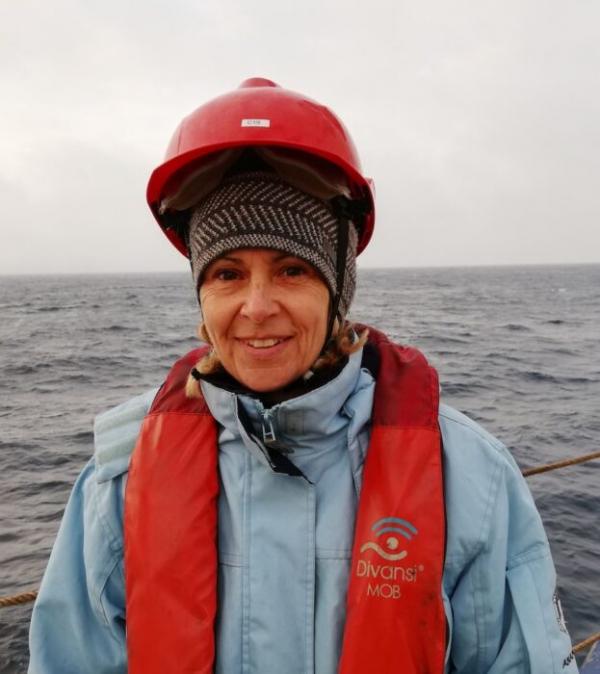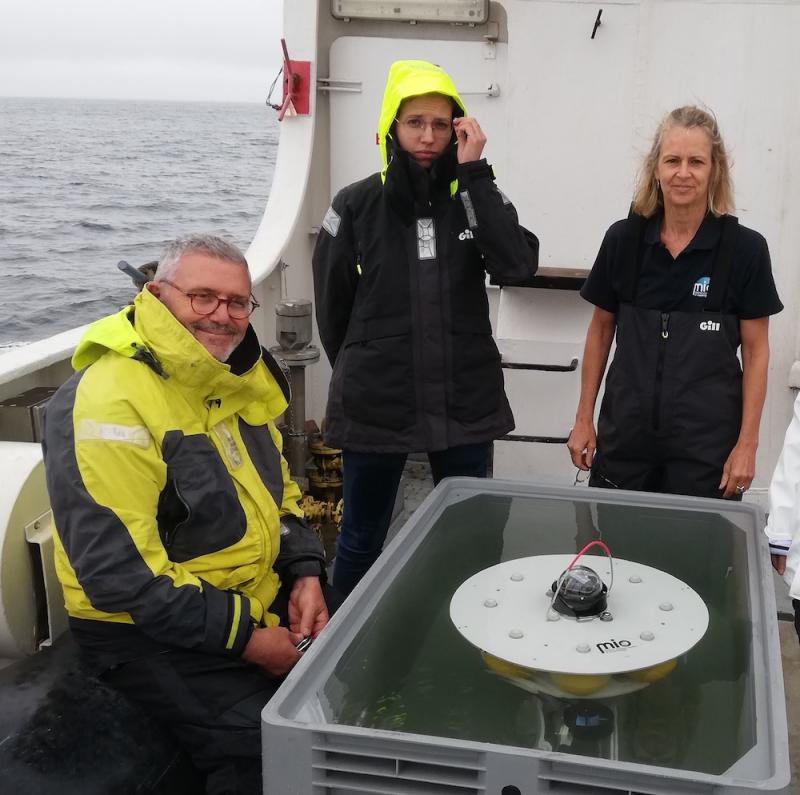ADCP
Anne Petrenko is responsible for the analysis of hull-mounted ADCPs and the deployment of L-ADCPs and FF-ADCPs as part of the BioSWOT-Med campaign. Here she describes how these instruments work and the differences between them.
Anne Petrenko.
OCEANOGRAPHERS' INSTRUMENTS - Anne Petrenko is a professor at Aix-Marseille University, at the Mediterranean Institute of Oceanology. She is a physical oceanographer with interdisciplinary skills and interests.
What are your research interests outside BioSWOT-Med?
From a scientific point of view, I have for some time concentrated my research on coastal circulation and coast-sea gradients, using multidisciplinary approaches: in situ data, modelling results and satellite data. In addition to currents, the data includes conventional temperature, salinity and depth, as well as all kinds of optical data providing information on phytoplankton and particles in the water column. I generally measure currents using ADCP, as described below.
Recently, with our doctoral student Caroline Comby, and our colleagues Stéphanie Barrillon and Jean-Luc Fuda and others, we have been focusing on the challenge of estimating vertical velocities. We do this either theoretically (using equations) or by measurement. In the latter case, we have two types of approach: either using a flight model as in the case of the VVP, or using 5-beam ADCPs (ADCPs with a special vertical beam). We have carried out these measurements in low-energy regions (with relatively low vertical velocities) in order to challenge our results, and we are also looking to measure these velocities in areas where the ascending or descending velocities are higher. The aim is then to relate the results to biology and, as part of the future HOPE-VV programme (starting at the end of 2023), to relate them to carbon export due to trichodermium in the South Pacific.
Outside science, I enjoy swimming, walking/hiking, singing, reading, yoga and teaching hatha yoga. Teaching yoga is completely different from teaching science but, in both cases, it's great to sow seeds or, better still, to see 'plants' grow. I really love teaching, I love seeing people/students understand new concepts. Maybe it's because I thrive on learning new things myself. I'm very curious and enthusiastic about discovering new ways of thinking. I suppose that's why I'm a scientist. I'm never bored in my work.
As part of the BioSWOT-Med campaign, you will be responsible for analysing the hull-mounted ADCP and deploying the L-ADCP and FF-ADCP. What are they and how do they work?
An Acoustic Doppler Current Profiler (ADCP) is an instrument used to measure current velocity over a certain depth using the Doppler effect of sound waves, reflected by particles in the water column. If a sound is emitted and there is a receiver, the Doppler effect means that the pitch of the sound increases (decreases) as the distance between the emitter and receiver shortens (lengthens). The faster the distance changes, the faster the pitch changes. Conversely, if we measure the drift of the pitch in relation to its initial value, we can evaluate the relative displacement between the transmitter and receiver. This is what we use with the ADCP, on the assumption that the particles on which the sound is backscattered drift passively with the ocean currents. The velocities, measured by the frequency shift of the backscattered sound waves, are therefore considered to be ocean velocities.
These ADCPs can be placed at a fixed point (e.g. on a mooring or a fixed ocean structure), in the hull of a vessel (hereinafter referred to as VM-ADCP for vessel-mounted ADCP), attached to a CTD rosette (referred to as L-ADCP for lowered ADCP) or to a free-fall cage (referred to as FF-ADCP).
Contact us: Tosca Ballerini
More information
Jean-Luc Fuda, Caroline Comby, Anne Petrenko (left to right).






